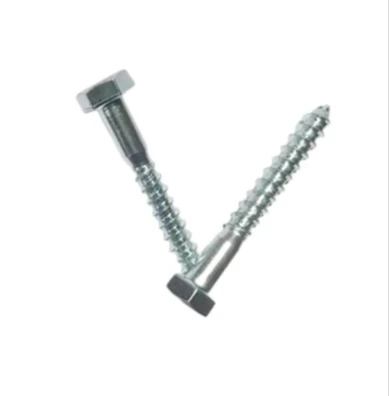दिसम्बर . 05, 2024 13:00 Back to list
Guidelines for Selecting and Using Flat Washer Specifications in Engineering Applications
Understanding Flat Washer Specifications
Flat washers are fundamental components used in various mechanical applications to distribute load, reduce friction, and prevent damage to materials being fastened. They come in different sizes, materials, and specifications tailored to meet the requirements of specific projects. This article explores the key specifications and considerations pertinent to flat washers, which are essential for engineers, manufacturers, and DIY enthusiasts alike.
Types of Flat Washers
Flat washers are designated by their shape and design, which typically includes a circular disc with a hole in the center. They are generally categorized based on their application, including
1. Standard Flat Washers Used in most applications, providing basic load distribution. 2. Fender Washers Wider in diameter, suitable for use with larger screws or bolts to provide greater surface area. 3. Lock Washers Designed to prevent loosening from vibration, usually featuring a split or serrated edge.
Material Specifications
The choice of material for flat washers is critical to their performance, as it affects their strength, corrosion resistance, and overall durability
. Common materials include- Steel Typically used for its strength and affordability. It can be coated with zinc or other finishes to enhance corrosion resistance. - Stainless Steel Offers superior corrosion resistance and is ideal for environments exposed to moisture or harsh chemicals. - Plastic or Nylon Useful in applications requiring electrical insulation or lightweight components. - Bronze or Copper Often used in applications where conductivity or non-magnetic properties are essential.
The material choice will largely depend on the application and environment. For instance, in marine applications, stainless steel washers are frequently used due to their resistance to saltwater corrosion.
Dimensions and Tolerances
flat washer specifications

The specifications of flat washers include several critical dimensions
1. Outer Diameter (OD) The overall width of the washer, which determines how much surface area is available for load distribution. 2. Inner Diameter (ID) The hole size that fits over the bolt or screw. Selecting the correct ID is crucial for ensuring compatibility with fasteners. 3. Thickness Thicker washers can provide more load-bearing capacity, but they may also require special consideration regarding clearance and fit.
Manufacturers often provide detailed tolerance specifications for these dimensions, which must be adhered to for proper function. For example, a specific washer might have an OD tolerance of ±0.5 mm, ensuring that every washer produced meets safety and performance standards.
Load and Strength Ratings
Flat washers must be selected based on the load they are expected to endure. This load-bearing capacity can be affected by factors such as the material used, the washer's dimensions, and the type of fastening application. Washers are often rated for tensile strength which provides a measure of how much load they can handle without deforming. When choosing washers for applications exposed to dynamic loads, it’s important to consider not only their static load ratings but also their fatigue resistance.
Industry Standards
Flat washers are often produced in accordance with specific industry standards, such as those set by the American National Standards Institute (ANSI) or the International Organization for Standardization (ISO). Compliance with these standards ensures that washers meet minimum quality, performance, and safety requirements, thus reducing the risk of failure in crucial applications.
Conclusion
Understanding flat washer specifications is essential for ensuring the safety and effectiveness of mechanical assemblies. By selecting the appropriate type of washer based on material, dimensions, load ratings, and industry standards, engineers and manufacturers can greatly enhance the reliability of their projects. Whether you are working on a simple DIY task or designing a complex machinery system, the right choice of flat washers can significantly impact performance and longevity. Always refer to manufacturer specifications and standards to make informed decisions on your washer selections.


